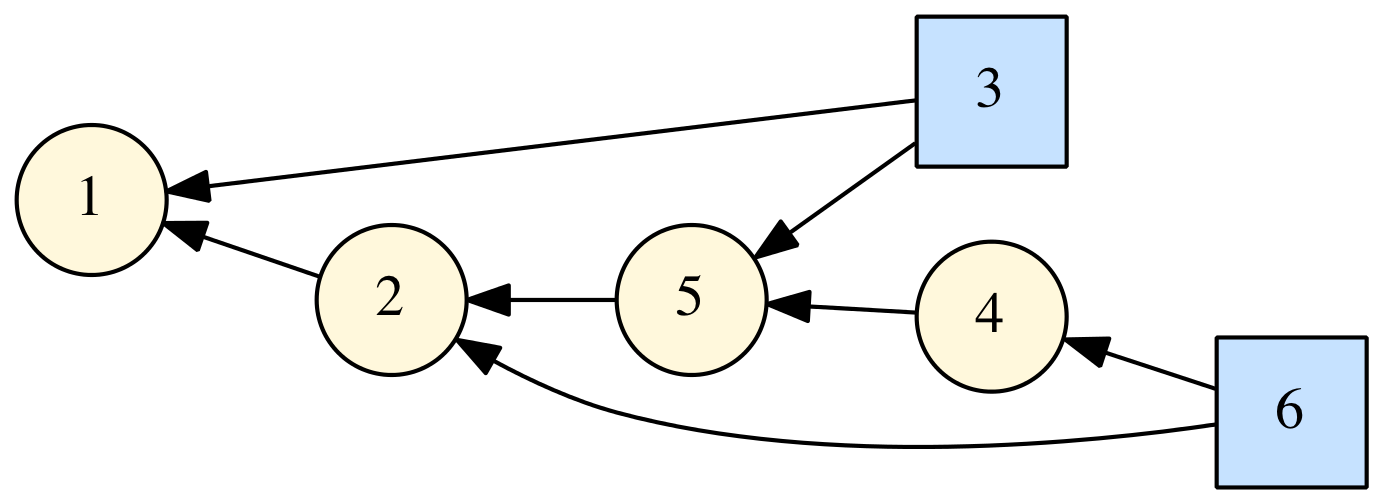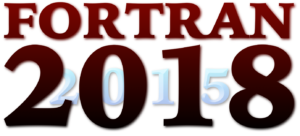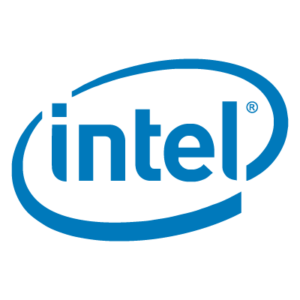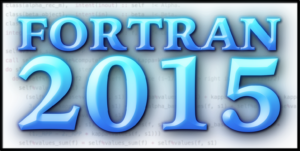Feb 05, 2018

I have mentioned various kinds of configuration file formats used in Fortran here before. One that I haven't mentioned is the text PCK file format used by the NAIF SPICE Toolkit. This is a format that is similar in some ways to Fortran namelists, but with a better API for reading the file and querying the contents. Variables read from a PCK file are inserted into the SPICE variable pool. An example PCK file (pck00010.tpc) can be found here.
The PCK file format has some limitations. It doesn't allow inline comments (only block comments separate from the variable declarations). Integers are stored as rounded doubles, and logical variables are not supported at all (you have to use 0.0 or 1.0 for this). One particular annoyance is that the files are not cross platform (the line breaks must match the platform they are being used on). However, SPICELIB also provides routines to programmatically enter variables into the pool. This allows us to create files in other formats that can be used in a SPICE application. For example, we can use JSON-Fortran to read variables in JSON files and insert them into the SPICE pool.
First, let's declare the interfaces to the SPICE routines we need (since SPICELIB is straight up Fortran 77, they are not in a module):
interface
subroutine pcpool ( name, n, cvals )
implicit none
character(len=*) :: name
integer :: n
character(len=*) :: cvals ( * )
end subroutine pcpool
subroutine pdpool ( name, n, values )
import :: wp
implicit none
character(len=*) :: name
integer :: n
real(wp) :: values ( * )
end subroutine pdpool
subroutine pipool ( name, n, ivals )
implicit none
character(len=*) :: name
integer :: n
integer :: ivals ( * )
end subroutine pipool
subroutine setmsg ( msg )
implicit none
character(len=*) :: msg
end subroutine setmsg
subroutine sigerr ( msg )
implicit none
character(len=*) :: msg
end subroutine sigerr
end interface
Then, we can use the following routine:
subroutine json_to_spice(jsonfile)
implicit none
character(len=*),intent(in) :: jsonfile
!! the JSON file to load
integer :: i,j
type(json_core) :: json
type(json_value),pointer :: p,p_var,p_element
real(wp) :: real_val
integer :: var_type,int_val,n_vars,n_children,element_var_type
logical :: found
integer,dimension(:),allocatable :: int_vec
real(wp),dimension(:),allocatable :: real_vec
character(len=:),dimension(:),allocatable :: char_vec
character(len=:),allocatable :: char_val,name
integer,dimension(:),allocatable :: ilen
nullify(p)
! allow for // style comments:
call json%initialize(comment_char='/')
! read the file:
call json%parse(file=jsonfile, p=p)
if (json%failed()) then
! we will use the SPICE error handler:
call setmsg ( 'json_to_spice: Could not load file: '&
trim(jsonfile) )
call sigerr ( 'SPICE(INVALIDJSONFILE)' )
else
! how many variables are in the file:
call json%info(p,n_children=n_vars)
main : do i = 1, n_vars
call json%get_child(p, i, p_var, found)
! what kind of variable is it?:
call json%info(p_var,var_type=var_type,name=name)
if (var_type == json_array) then
! how many elements in this array?:
call json%info(p_var,n_children=n_children)
! first make sure all the variables are the same type
! [must be integer, real, or character]
do j = 1, n_children
call json%get_child(p_var, j, p_element, found)
call json%info(p_element,var_type=element_var_type)
if (j==1) then
var_type = element_var_type
else
if (var_type /= element_var_type) then
call setmsg ( 'json_to_spice: Invalid array ('&
trim(name)//') in file: '//trim(jsonfile) )
call sigerr ( 'SPICE(INVALIDJSONVAR)' )
exit main
end if
end if
end do
! now we know the var type, so get as a vector:
select case (var_type)
case(json_integer); call json%get(p_var,int_vec)
case(json_double ); call json%get(p_var,real_vec)
case(json_string ); call json%get(p_var,char_vec,ilen)
case default
call setmsg ( 'json_to_spice: Invalid array ('&
trim(name)//') in file: '//trim(jsonfile) )
call sigerr ( 'SPICE(INVALIDJSONVAR)' )
exit main
end select
else
! scalar:
n_children = 1
select case (var_type)
case(json_integer)
call json%get(p_var,int_val); int_vec = [int_val]
case(json_double )
call json%get(p_var,real_val); real_vec = [real_val]
case(json_string )
call json%get(p_var,char_val); char_vec = [char_val]
case default
call setmsg ( 'json_to_spice: Invalid variable ('&
trim(name)//') in file: '//trim(jsonfile) )
call sigerr ( 'SPICE(INVALIDJSONVAR)' )
exit main
end select
end if
! now, add them to the pool:
select case (var_type)
case(json_integer)
call pipool ( name, n_children, int_vec )
case(json_double )
call pdpool ( name, n_children, real_vec )
case(json_string )
call pcpool ( name, n_children, char_vec )
end select
end do main
end if
call json%destroy(p)
end subroutine json_to_spice
Here we are using the SPICE routines PIPOOL, PDPOOL, and PCPOOL to insert variables into the pool. We are also using the built-in SPICE error handling routines (SETMSG and SIGERR) to manage errors. The code works for scalar and array variables. It can be used to read the following example JSON file:
{
"str": "qwerty", // a scalar string
"strings": ["a", "ab", "abc", "d"], // a vector of strings
"i": 8, // a scalar integer
"ints": [255,127,0], // a vector of integers
"r": 123.345, // a scalar real
"reals": [999.345, 5671.8] // a vector of reals
}
After reading it, we can verify that the variables were added to the pool by printing the pool contents using the routine WRPOOL. This produces:
\begindata
str = 'qwerty'
i = 0.80000000000000000D+01
strings = ( 'a',
'ab',
'abc',
'd' )
ints = ( 0.25500000000000000D+03,
0.12700000000000000D+03,
0.00000000000000000D+00 )
r = 0.12334500000000000D+03
reals = ( 0.99934500000000003D+03,
0.56718000000000002D+04 )
\begintext
See also
Feb 01, 2018

The IAU Standards of Fundamental Astronomy (SOFA) library implements standard models used in fundamental astronomy. Version 14 ( 2018-01-30) has just been released. According to the release notes, this update includes the following:
- Change in the copyright status of the iau_DAT routine. This is to provide for a user-supplied mechanism for updating the number of leap seconds. SOFA doesn't provide any such mechanism, but they are now allowing you to replace or modify this routine to provide your own without having to rename the routine (all other SOFA routines cannot be modified without renaming them).
- Implementation of two new categories of routines:
- Three new routines for the horizon/equatorial plane coordinates.
- iau_AE2HD — (azimuth, altitude) to (hour angle, declination)
- iau_HD2AE — (hour angle, declination) to (azimuth, altitude)
- iau_HD2PA — parallactic angle
- Six new routines dealing with gnomonic (tangent plane) projections.
- iau_TPORS — solve for tangent point, spherical
- iau_TPORV — solve for tangent point, vector
- iau_TPSTS — project tangent plane to celestial, spherical
- iau_TPSTV — project tangent plane to celestial, vector
- iau_TPXES — project celestial to tangent plane, spherical
- iau_TPXEV — project celestial to tangent plane, vector
- The Astrometry Tools Cookbook, the test program and other supporting files have also been updated.
- Other minor documentation/typographical corrections to various files.
IAU SOFA has a Fortran 77 and a C version. While this is a great resource, I do wonder why the IAU insists on using a source format for the Fortran version that was rendered obsolete 30 years ago? There's no reason for this. This is new code that is regularly kept up to date, so why not modernize it for those of us living in the 21st century?
Consider this SOFA routine:
SUBROUTINE iau_TR ( R, RT )
IMPLICIT NONE
DOUBLE PRECISION R(3,3), RT(3,3)
DOUBLE PRECISION WM(3,3)
INTEGER I, J
DO 2 I=1,3
DO 1 J=1,3
WM(I,J) = R(J,I)
1 CONTINUE
2 CONTINUE
CALL iau_CR ( WM, RT )
END SUBROUTINE iau_TR
All this is doing is transposing a 3x3 matrix. Well, since the late 1990s, to do that in Fortran all you need is:
The original routine is just awful: all caps, line numbers, CONTINUE statements, and 100% unnecessary. Unfortunately, it's code like this that gives Fortran a bad name (reinforcing the perception that Fortran is an arcane and obsolete programming language). Anyone who is compiling this code is probably using a compiler that is at least Fortran 95 compatible. Who on earth is using straight up Fortran 77 compilers at this point? So why restrict such a useful library to a programming style that is so totally out of date? I think it is even probably affecting the efficiency of the code, since the example above required using a temporary array and a function call to do what can now be done with a (presumably much more efficient) intrinsic routine. It wouldn't even be that hard to convert this code to modern Fortran style. It's just low-level math routines, it doesn't have to be object-oriented or anything fancy like that. A while back, I wrote a little Python script to merge all the SOFA files into a single Fortran module (another innovation from the 1990s) so they can take advantage of the automatic interface checking that modules provide. There are also any number of tools out that could be used to automate the fixed to free-form conversion.
See also
Jan 27, 2018

I released a new open source project on GitHub: DAGLIB, a modern Fortran library for manipulation of directed acyclic graphs (DAGs). This is based on some code I showed in a previous post. Right now, it's very basic, but you can use it to define DAGs, generate the topologically sorted order, and generate a "dot" file that can be used by GraphViz to visualize the DAG (such as the one shown at right).
In my recent AIAA paper I showed the following DAG representing how we have designed the upcoming Orion EM-1 mission:


*During Exploration Mission-1, Orion will venture thousands of miles beyond the moon during an approximately three week mission. [NASA]*
In this case, the DAG represents the dependencies among different mission attributes (which represent maneuvers, coast phases, constraints, other algorithms, etc). To simulate the entire end-to-end mission, each element must be evaluated in the correct order such that all the dependencies are met. In this same paper, we also discuss other algorithms and their implementation in modern Fortran which may be familiar to readers of this blog.
See also
- J. Williams, R. D. Falck, and I. B. Beekman. "Application of Modern Fortran to Spacecraft Trajectory Design and Optimization", 2018 Space Flight Mechanics Meeting, AIAA SciTech Forum, (AIAA 2018-1451)
- (Modern?) Fortran directed graphs library [comp.lang.fortran] May 6, 2016
- JSON-Fortran GraphViz Example (how to generate a directed graph from a JSON structure), Apr 22, 2017
- The Ins and Outs of NASA’s First Launch of SLS and Orion, NASA, Nov. 27, 2015
Dec 10, 2017

The upcoming Fortran standard formerly known as Fortran 2015 has a new name: Fortran 2018. It was decided to change it in order to match the expected year of publication. This makes sense. The previous standard (Fortran 2008) was published in 2010.
Waiting for an updated Fortran standard is an exercise in Zen-like patience. Almost a decade after Fortran 2008, we'll get a fairly minor update to the core language. And it will be years after that before it's fully supported by any compiler that most users will have available (gfortran still doesn't have a bug-free implementation of all of Fortran 2008 or even 2003). Fortran was essentially reborn in the Fortran 2003 standard, which was an amazing update that brought Fortran into the modern world. It's a terrific programming language for scientific and technical computing. However, the limitations are all too clear and have been for a long time:
- We need better facilities for generic programming. It's impossible to do some things without having to duplicate code or use "tricks" like preprocessing or include files (see JSON-Fortran for examples).
- We need some kind of exception handling. Fortran does have a floating-point exception handling feature, but honestly, it's somewhat half-baked.
- We need a better implementation of strings. Allocatable strings (introduced in Fortran 2003) are great, but not enough, since they can't be used in all instances where strings are needed.
- We need the language to be generally less verbose. I'm tired to having to type multiple nested SELECT TYPE statements to do something that is a one liner in Python (sure I know Fortran will never be as succinct as Python, but some of the verbosity required for object-oriented Fortran is just perverse).
- We need any number of new features to make it easier to extend the language with third-party libraries (so we don't have to wait two decades for a feature we want).
- We also need the language development process to embrace a more open collaborative model using modern tools (Usenet is not the future). I guess the recent survey was unprecedented, but it's not enough.

Fortran is a programming language that needs a better PR department. Legacy Fortran codes are being rewritten in C++, Python, or even Julia. NASA frequently throws massive Fortran 77 libraries with decades of heritage (e.g., DPTRAJ/ODP, GTDS, SPICELIB) into the trash in order to rewrite it all from the ground up in C++, without ever considering Fortran 2003+ (or maybe not realizing it exists?). The information about modern Fortran on the internet is spotty at best, outdated, or downright wrong (what is the deal with REAL*8?). In popular consciousness Fortran is mostly a punchline (usually something to do with punchcards and your granddad). A language like Python (which was never designed for technical computing) is now seen by many as a superior solution for technical computing. Matlab refers to itself as "the only top programming language dedicated to mathematical and technical computing"! The Julia website lists somewhat misleading benchmarks than implies that C, Julia, and even Lua are faster than Fortran.
Now, get off my lawn, you kids!

See also
Sep 12, 2017

Intel has just released version 18 of the Intel Fortran Compiler (part of Intel Parallel Studio XE 2018). At long last, this release includes full support for the Fortran 2008 standard. The updates since the previous compiler release include:
COMPILER_OPTIONS and COMPILER_VERSION in ISO_FORTRAN_ENV- Complex arguments to trigonometric and hyperbolic intrinsic functions
FINDLOC intrinsic function- Optional argument
BACK in MAXLOC and MINLOC intrinsic functions
- Multiple type-bound procedures in a
PROCEDURE list
- Passing a non-pointer data item to a pointer dummy argument
- Polymorphic assignment with allocatable Left Hand Side (LHS)
- Allocatable components of recursive type and forward reference
- Data statement restrictions removed
In addition, the new release also includes support for all the features from "Technical Specification 29113 Further Interoperability with C", planned for inclusion in Fortran 2015. These include:
- Assumed type (
TYPE(*))
- Assumed rank (
DIMENSION(..))
- Relaxed restrictions on interoperable dummy arguments
ISO_Fortran_binding.h C include file for use by C code manipulating "C descriptors" used by Fortran
Hopefully, it won't take so long to get the compiler up to full Fortran 2015 compliance (see a previous post for a list of new Fortran 2015 features).
See also
Aug 12, 2017

JPL's SPICE Toolkit (SPICELIB) is the premier software library for computations related to solar system geometry. It is freely distributed, and is also one of the best-documented libraries I have ever come across. SPICELIB also includes a comprehensive set of routines for date and time conversions. An example is shown here:
program spice_test
use iso_fortran_env, only: wp => real64
implicit none
interface
! SPICELIB routines
subroutine timout ( et, pictur, output )
import :: wp
implicit none
real(wp),intent(in) :: et
character(len=*),intent(in) :: pictur
character(len=*),intent(out) :: output
end subroutine timout
subroutine str2et ( string, et )
import :: wp
implicit none
character(len=*),intent(in) :: string
real(wp),intent(out) :: et
end subroutine str2et
subroutine furnsh ( file )
implicit none
character(len=*),intent(in) :: file
end subroutine furnsh
end interface
character(len=*),parameter :: time_in = &
'2017 Aug 12 00:00:00 TDB'
character(len=*),parameter :: pictur = &
'Mon DD,YYYY HR:MN:SC.#### UTC ::UTC'
real(wp) :: et
character(len=100) :: time_out
! load the leap second kernel:
call furnsh('naif0012.tls')
! example conversion:
call str2et(time_in, et)
call timout(et, pictur, time_out)
write(*,*) 'time_in: ', time_in
write(*,*) 'et: ', et
write(*,*) 'time_out: ', time_out
end program spice_test
A few things to note:
- Here we are using the SPICE routines str2et and timout to convert a string from a TDB calendar date to ephemeris time and then to a UTC calendar date. These routines are very flexible and can convert a wide range of date formats. Other routines are available to do other transformations.
- The base time system of SPICE is Barycentric Dynamical Time (TDB). "Ephemeris time" is a count of TDB seconds since the J2000 epoch (Jan 1, 2000 12:00:00).
- We have to load the latest leap second kernel (naif0012.tls in this case), which is necessary to define UTC.
- The SPICE routines are not in a module (the code is Fortran 77), and so have no explicit interfaces. Thus it is good practice to specify them as I do here.
The output of this example is:
time_in: 2017 Aug 12 00:00:00 TDB
et: 555768000.00000000
time_out: Aug 11,2017 23:58:50.8169 UTC
See also
Aug 11, 2017

JPL recently released an update to their awesome SPICE Toolkit (it is now at version N66). The major new feature in this release is the Digital Shape Kernel (DSK) capability to define the shapes of bodies (such as asteroids) via tessellated plate models.
Unfortunately for Fortran users, they also announced that they have decided to reimplement the entire library in C++. SPICELIB is currently written in Fortran 77, which they f2c to provide a C version (which is also callable from IDL, Matlab, and Python, among others). Their reason for this "upgrade" is to provide thread safety and object oriented features. Of course, modern Fortran can be thread safe and object oriented, and upgrading the code to modern standards could be done in a fraction of the time it will take to rewrite everything from scratch in C++. SPICELIB is extremely well-written Fortran 77 code, and is not infested with COMMON blocks, EQUIVALENCE statements, etc. I actually don't think it would take much effort to modernize it. In addition, Fortran/C interoperability could be employed to easily provide an interface that is callable from C without source transformation.
However, I guess it isn't meant to be, and the science/engineering community will lose another Fortran code to C++ like many times before, in spite of C++ being a terrible language for scientists and engineers.
See also
Aug 11, 2017

The glacially slow pace of Fortran language development continues! The next standard, Fortran 2015, mainly consists of updates for Fortran/C interoperability and new coarray features such as teams. In addition, there are a bunch of minor changes and discrepancy fixes. A few of the new features are:
- The venerable
implicit none statement has been updated to allow for some additional use related to external procedures.
- The stop code in
error stop can now be any integer or character expression.
- An
out_of_range intrinsic was added to allow for testing whether a real or integer value can be safely converted to a different real or integer type and kind.
- You can now declare the kind of the loop variable inside an implied do loop. For example:
iarray = [(2*i, integer :: i=1,n)].
- All procedures are now recursive by default. This is an interesting change. Ever since recursion was added to the language in Fortran 90, a procedure has had to be explicitly declared as
recursive. Now, you have to use non_recursive if you don't want to allow a procedure to be used recursively.
- Some new syntax to indicate the locality status of variables within a
do concurrent loop.
- There are a lot of new IEEE intrinsic routines for some reason.
Fortran 2015 is expected to be published in 2018.
See also
Jun 20, 2017

You can now try OpenCoarrays and Gfortran in the cloud, courtesy of Zaak Beekman and the Sourcery Institute. Just navigate to http://bit.ly/TryCoarrays and then click "Launch". This awesome project is enabled by various other awesome tools like Binder, Jupyter, and GitHub. Truly, we are living in the future.
Coarrays are the parallel processing component built into the Fortran language (standardized in Fortran 2008). It uses the Partitioned Global Address Space (PGAS) and Single-Program-Multiple-Data (SPMD) programming models. OpenCoarrays is an open source library to enable coarray usage in Gfortran.
See also
May 19, 2017

It appears that Flang, a new open source Fortran front-end for LLVM, has appeared on GitHub recently with little fanfare. This is apparently the result of NVIDIA's previously-announced plan to open source the PGI Fortran compiler. Unfortunately, they decided to give it the same name as another earlier attempt to create a Fortran/LLVM compiler (more confusion for poor Fortran programmers). I don't really know how it compares to Gfortran or Intel (PGI appears to be lagging behind on support for the Fortran 2008 standard). Initial tests by Usenet denizens (yes Usenet still exists) indicate that maybe Flang isn't quite ready for prime time. Hopefully it will improve with time. I think it's great news to potentially have another free Fortran compiler available.
See also













